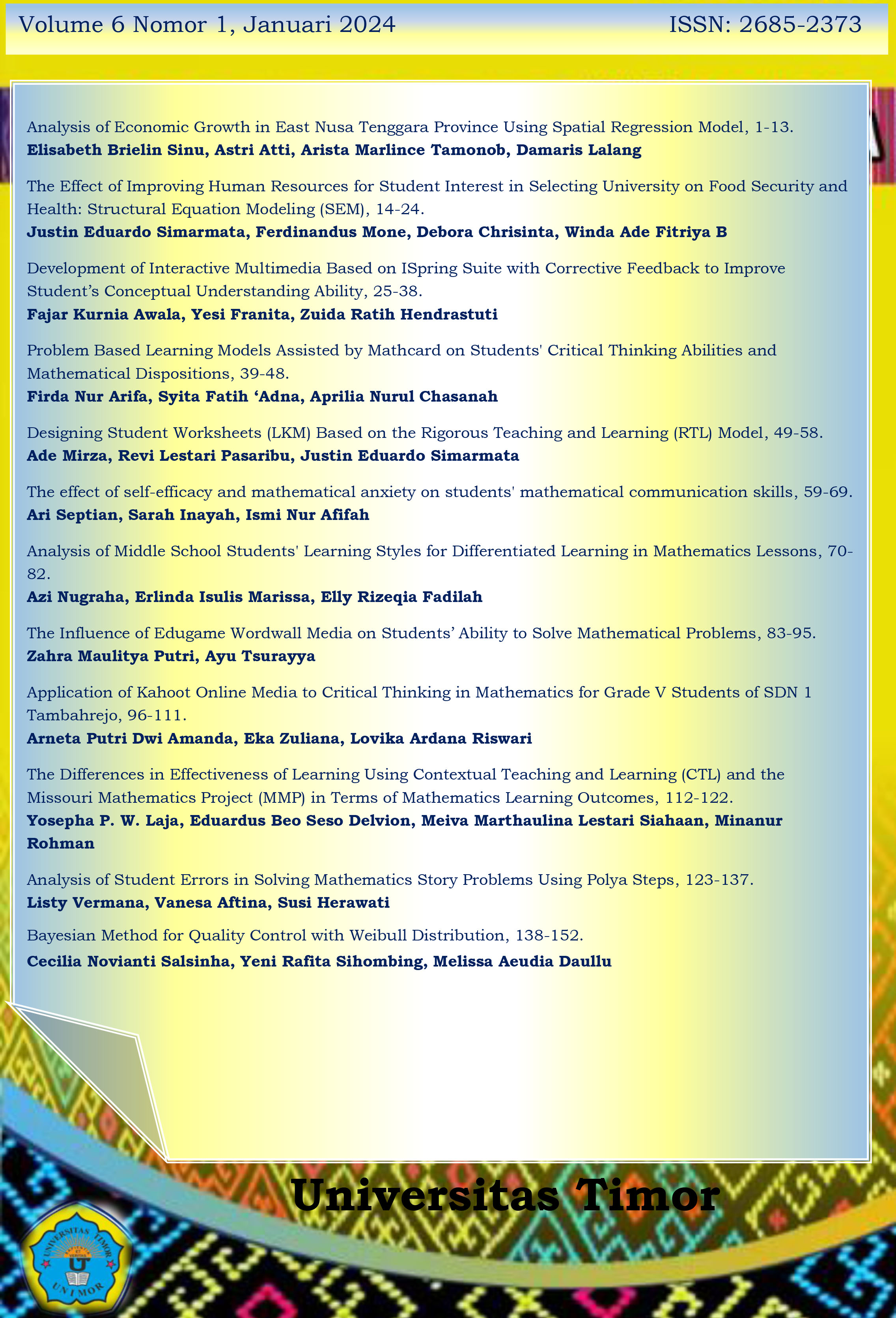The Effect of Improving Human Resources for Student Interest in Selecting University on Food Security and Health: Structural Equation Modeling (SEM)
Main Article Content
Abstract
The selection of State Universities by students has a significant impact on improving the quality of human resources, so it can also affect the improvement of food security and health. This study aims to understand the extent of students' interest in selecting university which contributes to improving human resources and can indirectly affect food security and health. This study uses the Structural Equation Modeling (SEM) method to analyze the interaction between latent variables. Data was collected through questionnaires from high school students on the Indonesia-Timor Leste border. The data used in this study include students' interest in selecting university (Y), education and knowledge (X1), skills and abilities (X2), food security (X3), and health (X4). The results showed that students' interest in selecting university had a significant correlation with improving human resources through education by 90% (X1) and 84% (X2). The impact of this increase in human resources is also seen in the improvement of food security and public health which provides a correlation of 98% (X3) and 81% (X4).
Article Details
RANGE: Jurnal Pendidikan Matematika
References
Arlius, A., Sudargo, T., & Subejo, S. (2017). Hubungan Ketahanan Pangan Keluarga Dengan Status Gizi Balita (Studi di Desa Palasari dan Puskesmas Kecamatan Legok, Kabupaten Tangerang). Jurnal Ketahanan Nasional, 23(3), 359–375. https://doi.org/10.22146/jkn.25500
Balzer, W. K. (2020). Lean higher education: Increasing the value and performance of university processes. CRC Press.
Barrett, P., Treves, A., Shmis, T., & Ambasz, D. (2019). The impact of school infrastructure on learning: A synthesis of the evidence.
Damayanti, V. L., & Khoirudin, R. (2016). Analisis Faktor-Faktor yang Mempengaruhi Ketahanan Pangan Rumah Tangga Petani (Studi Kasus: Desa Timbulharjo, Sewon, Bantul). Jurnal Ekonomi & Studi Pembangunan, 17(2), 89–96. https://doi.org/10.18196/jesp.17.2.3735
Hernandez, J. C. (2019). Leaking pipeline: Issues impacting Latino/a college student retention. In Minority student retention (1st Edition, pp. 99–122).
Mc Carthy, U., Uysal, I., Badia-Melis, R., Mercier, S., O’Donnell, C., & Ktenioudaki, A. (2018). Global food security–Issues, challenges and technological solutions. Trends in Food Science & Technology, 77, 11–20. https://doi.org/10.1016/j.tifs.2018.05.002
Mok, W. K., Tan, Y. X., & Chen, W. N. (2020). Technology innovations for food security in Singapore: A case study of future food systems for an increasingly natural resource-scarce world. Trends in Food Science & Technology , 102, 155–168. https://doi.org/10.1016/j.tifs.2020.06.013
Raghupathi, V., & Raghupathi, W. (2020). The influence of education on health: an empirical assessment of OECD countries for the period 1995–2015. Archives of Public Health, 78(1), 1–18. https://doi.org/10.1186/s13690-020-00402-5
Samudro, A., Sumarwan, U., Simanjuntak, M., & Yusuf, E. (2020). Assessing the effects of perceived quality and perceived value on customer satisfaction. Management Science Letters, 10(5), 1077–1084. https://doi.org/10.5267/j.msl.2019.11.001
Teo, T., Tsai, L. T., & Yang, C. C. (2013). Applying Structural Equation Modeling (SEM) in Educational Research: An introduction. In Application of structural equation modeling in educational research and practice (pp. 1–21).
Thakkar, J. J. (2020). Structural Equation Modelling. Application for Research and Practice.
Tzenios, N. (2020). Clustering Students for Personalized Health Education Based on Learning Styles. Sage Science Review of Educational Technology, 3(1), 22–36.
